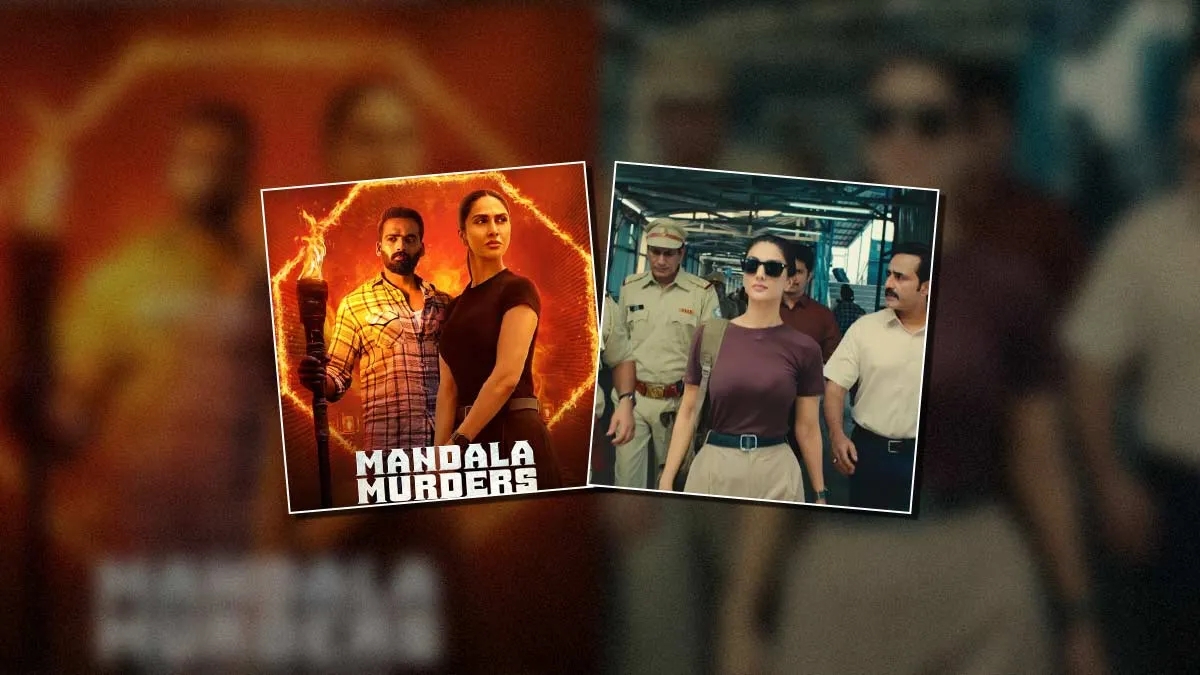
Mandala Murders Ending Explained: Vaani Kapoor’s Role, Killer Reveal, And Netflix Season 2 Possibilities
Netflix’s gripping crime thriller ‘Mandala Murders’ takes viewers deep into the dark underbelly of Charandaspur, a seemingly quiet town shaken by a string of ritualistic killings. Leading the investigation is CIB officer Rea Thomas (played by Vaani Kapoor), who teams up with suspended Delhi Police officer Vikram Singh (Vaibhav Raj Gupta). As they dig deeper into the case, they uncover disturbing ties to a secretive cult and shocking truths that change everything.
In this breakdown, we unpack the final episodes, reveal who the killer is, and discuss whether the story is truly over or if Season 2 might be on the horizon.
What Is Yast in Mandala Murders?
Central to Mandala Murders is the chilling myth of Yast, a man-made god, the Aayastis cult aims to bring to life. Unlike a symbolic deity, Yast is envisioned as a real, physical being, created by assembling what the cult considers “perfect” body parts from multiple victims. The concept is inspired by ancient Indian spiritual beliefs and the Vitruvian Man, an embodiment of ideal human proportions.
The cult believes that Yast will mark the beginning of a new divine age, purging humanity of the impure and leading the world into spiritual rebirth. But their devotion comes at a terrifying cost: a series of gruesome human sacrifices. Each murder is not arbitrary but serves a dark purpose, and each victim is chosen for a specific body part to complete Yast’s physical form.
This disturbing fusion of mysticism, body horror, and pseudo-science highlights the dangers of blind faith. The cult’s obsession with perfection and power becomes a metaphor for control, where spirituality is manipulated to justify unspeakable violence.
1
2
3
4
Why the Murders Follow a Mandala Pattern?
The killings aren’t just symbolic as they’re methodically designed to form the shape of a mandala, an ancient geometric figure representing balance and cosmic order. In spiritual traditions, mandalas are used to promote meditation and enlightenment. But in the world of Mandala Murders, the symbol is twisted into something sinister.
Each murder marks a point on this symbolic map, with the ultimate goal of completing the form of Yast. The pattern also acts as a breadcrumb trail, guiding Rea and Vikram through the investigation. This distorted use of the mandala showcases the cult’s obsession with cosmic balance, even if it means mass murder.
Don't Miss: The Fantastic Four: First Steps Post-Credit Scene And Ending Explained: MCU's Next Big Villain Teased
The show cleverly flips a spiritual concept into a narrative tool that reveals the cult’s methodical cruelty, emphasising how ideology can be warped into a weapon.
Mandala Murders Ending Explained
In the final episodes of Mandala Murders, the truth about the cult and its mission becomes clear. The Ayastis, a secret society rooted in twisted spirituality and pseudo-science, are trying to create Yast, a man-made god formed by collecting “perfect” body parts from various victims. They believe that this divine figure will purify the world and lead a new era. The murders, laid out in a mandala pattern, are not random but part of this larger ritual.
Who Is The Real Villain In Mandala Murders?
Ananya Bhardwaj, a powerful politician in Charandaspur, is revealed to be the mastermind behind the current wave of killings. She is continuing the work of her grandmother, Rukmini Devi, who had begun the Yast project decades ago. Ananya’s ambition and blind faith in her legacy push her to manipulate, murder, and sacrifice anyone who stands in her way.
On the other side is Rea Thomas, a dedicated officer from the CIB. She learns that her own grandmother, Nandini, had once been part of the cult but later destroyed a key part of the original ritual to stop the madness. This personal connection drives Rea to fight even harder to bring justice and end the killings.
Don't Miss: S Line Ending Explained: How Lee Soo-hyun Found The Killer Through Red Lines And Other Shocking Revelations
View this post on Instagram
The cult targets Vikram Singh, Rea’s ally and a suspended Delhi cop, as the final sacrifice needed to complete Yast. Vikram’s blood and body are believed to be the last “pieces” of the god. The tension peaks in the climax, where Ananya prepares to kill Vikram and complete the resurrection.
However, Rea arrives just in time, killing Ananya and stopping the ritual. The half-formed body of Yast remains incomplete, floating grotesquely in a tank, and the ritual collapses. Vikram is saved, and the cult's plan is temporarily destroyed.
But the story doesn’t end there. While Ananya is dead and the ritual is disrupted, the final scenes suggest that some cult members are still at large, and the ideology of the Ayastis hasn’t been fully erased. This leaves the door open for a possible second season, where the deeper roots of the cult and their plans may be explored.
Keep reading Herzindagi for more such stories.
Credits: Netflix Instagram/YRF Youtube
1
2
3
4